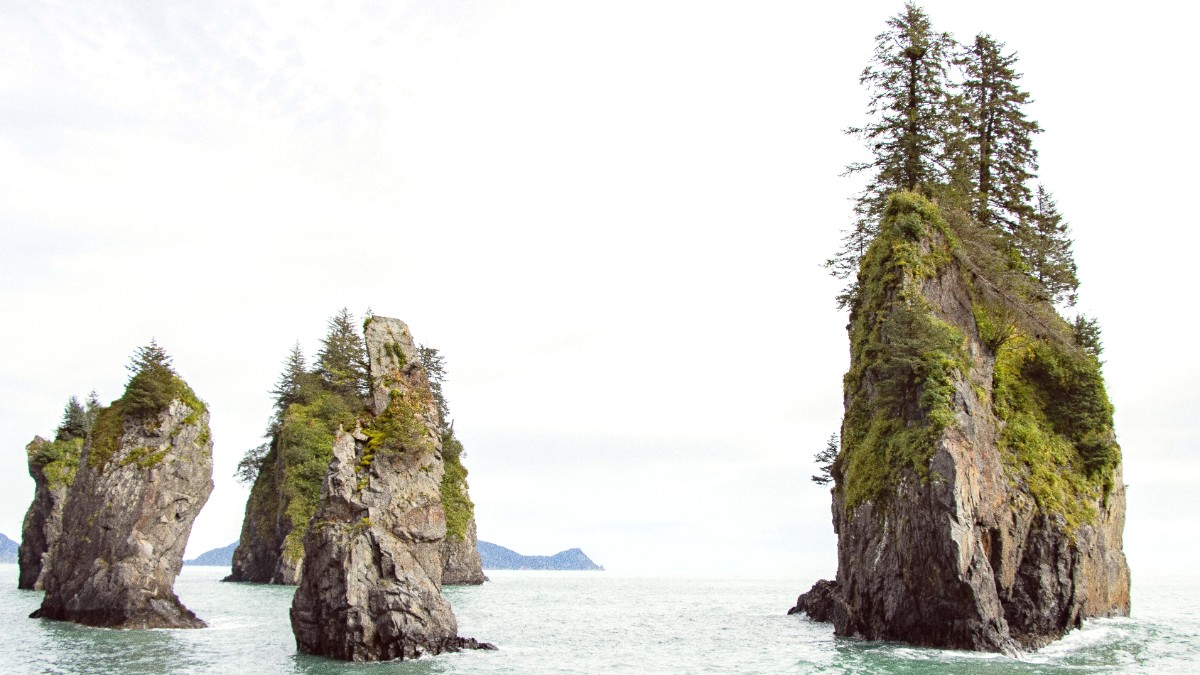
Alaska, USA
The region's landmarks tell stories of resilience, natural wonder, and historical endeavor. They connect visitors to the spirit of Alaska.
From the historic finish line of a renowned race to wildlife havens, these sites offer a glimpse into the heart of the West Coast.
The entire West Coast of Alaska generally has fewer crowds than other Alaskan destinations. Shoulder seasons (May, September) offer more solitude.
Numerous unexcavated sites reflect thousands of years of habitation. Most are not publicly accessible or marked due to fragility.
Retains some historical buildings dating back to the Gold Rush era, showing its boomtown past.
Remnants of World War II airfields and military bases exist in remote areas, generally inaccessible.
Several large, abandoned gold dredges are visible along the Nome roads, colossal reminders of industrial scale.
Remnants of Distant Early Warning Line radar stations from the Cold War are scattered across the tundra. Access often restricted.
The true majesty of Alaska's West Coast rests in its vast, untouched natural landscapes.
Remote, undeveloped preserve. Known for geological and archaeological significance, hot springs (Serpentine Hot Springs), and wildlife.
One of the largest wildlife refuges. A critical breeding ground for millions of migratory birds. Access mainly by boat or small plane.
Located in Bristol Bay. Known for wild salmon runs and exceptional brown bear viewing opportunities.
Driving offers expansive views of the tundra, opportunities to spot muskox, and coastal scenery.
Dramatic sea cliffs, volcanic landscapes, and vast seabird colonies define these unique islands.
Spectacular displays are possible on clear, dark nights, mainly from September to April, away from light pollution.
Northern Fur Seal Rookeries (St. Paul Island) are prime for observing marine mammals in their natural breeding grounds. Walrus on haulouts along the Bering Sea coast or islands (Round Island, permit required).
Brown Bears/Grizzlies are common in Bristol Bay during salmon runs. Caribou (Western Arctic Herd) are seen across northern parts (near Kotzebue) during migrations. Moose along rivers and in southern forested areas. Muskox near Nome.
Seabird Colonies: The Pribilof Islands (St. Paul, St. George) are world-renowned for millions of nesting seabirds including puffins, kittiwakes, and murres.
The landscape holds unique geological formations and vast waterways critical to the region.
Beyond the established attractions, Alaska's West Coast holds many less-visited treasures that provide unique insights and experiences.
These off-the-beaten-path locations offer a connection to the region's raw beauty and local life.
Explore remote villages and observe living traditions.
Capture the raw beauty and unique light of the Arctic landscape.
These spots are typically known only to residents, offering a truly local perspective.
Growing interest in cultural tourism and authentic village experiences shape these areas.
Embracing the vastness and remoteness defines the sightseeing experience here.
Travel to most natural attractions requires small aircraft or specialized tours. Local knowledge makes exploration safer.
When visiting Native communities or observing cultural events, show courtesy and seek permission for photography.
Weather changes rapidly. Dress in layers and pack for cold, wet, and windy conditions, even in summer.
For various attraction tickets and experiences, check platforms like GetYourGuide, though options for this specific region may be specialized.
Explore Tours on GetYourGuideSome unique attractions are best accessed via specialized lodges, often all-inclusive.
Find Specialized LodgingLocal tourism offices and Native corporations offer local tour operators and cultural contacts.
Bush plane charters are often needed for truly remote natural attractions.
Always research specific attraction details, including permits or access restrictions, before your visit.
These centers are repositories of the region's rich history and living cultures.
Vast, untouched landscapes are the true majesty of this region.
Local guidance is highly recommended for wilderness safety.
For more details on specific tours and activities, visit GetYourGuide.
A memorable journey to Alaska's West Coast involves a spirit of adventure and proper readiness for its unique environment.
The wilderness presents unique challenges; vigilance is recommended.
Respect the pristine environment with responsible tourism practices.
Your actions contribute to preserving this unique ecosystem.
Stay connected, but expect limitations in remote areas.
Embrace the chance to disconnect and immerse yourself in nature.
Costs are higher than typical destinations; plan your budget accordingly.
Advance planning helps manage trip costs.
A good starting point for local information, events, and tour operators in Nome.
Contact regional Native Corporations for cultural tours and community access information.
For wilderness excursions, contact local guides specializing in fishing, hunting, or wildlife viewing.